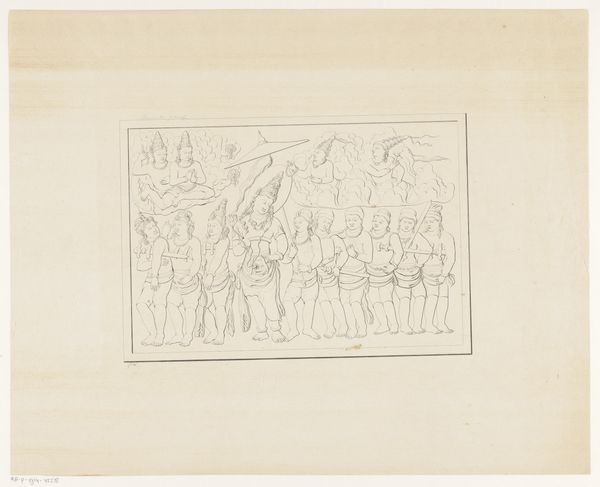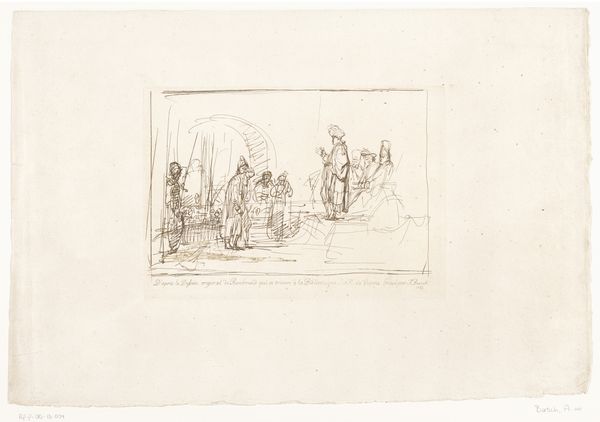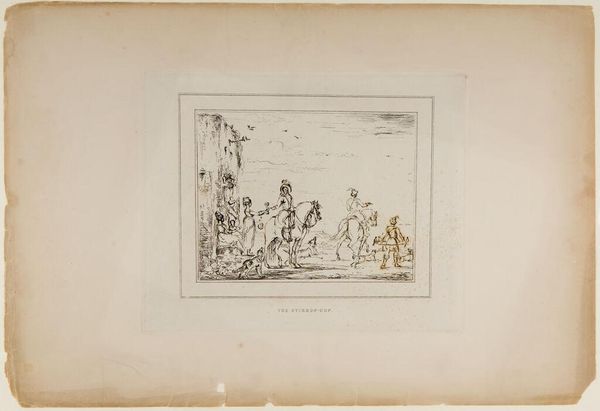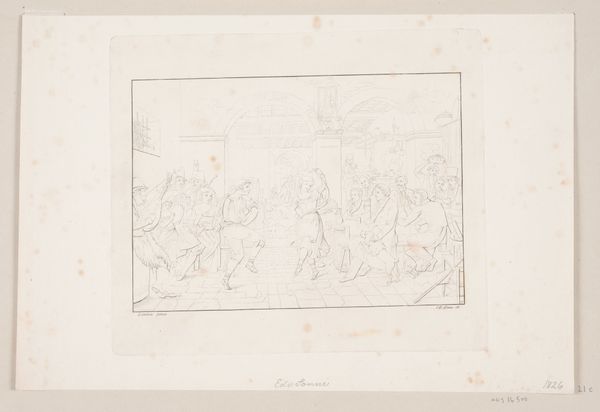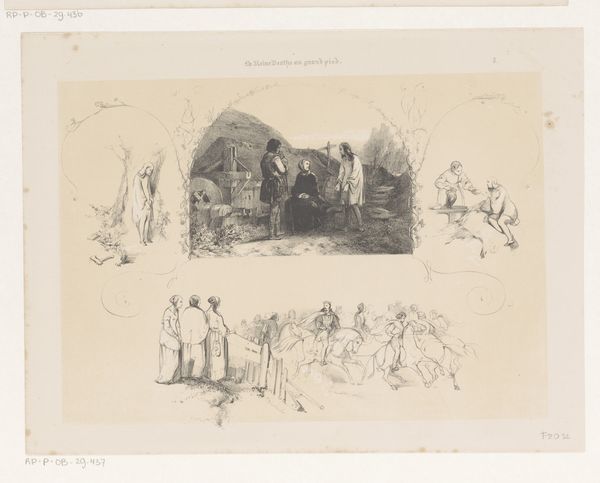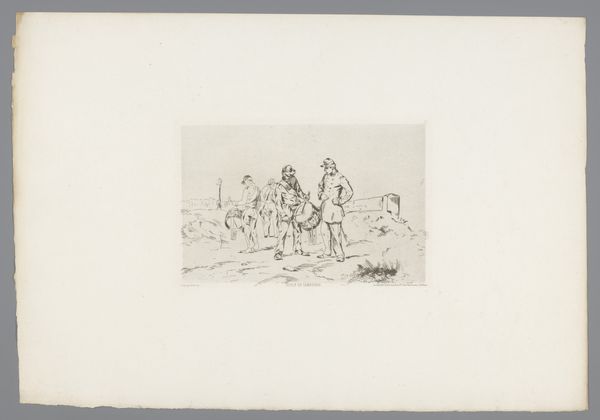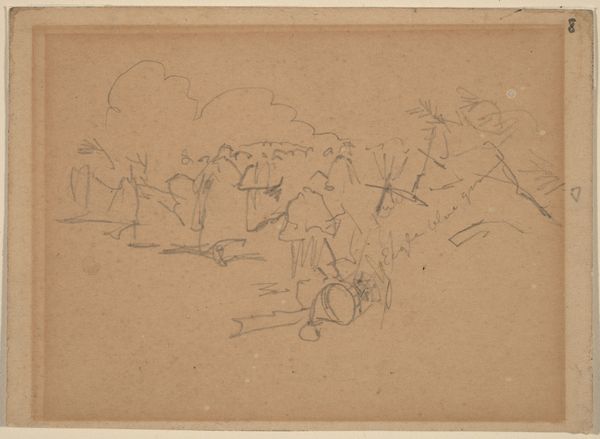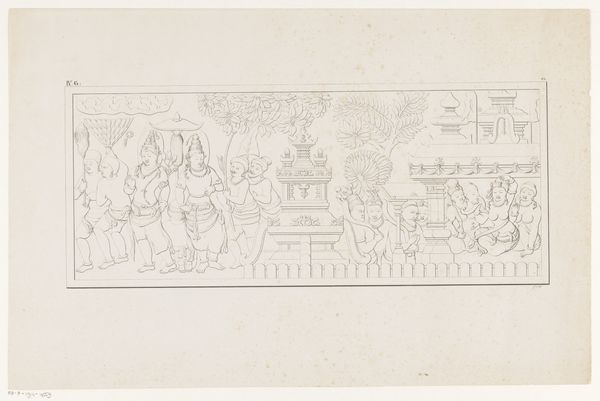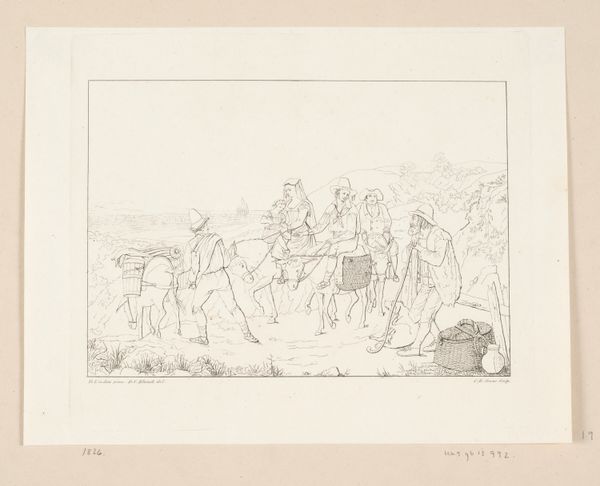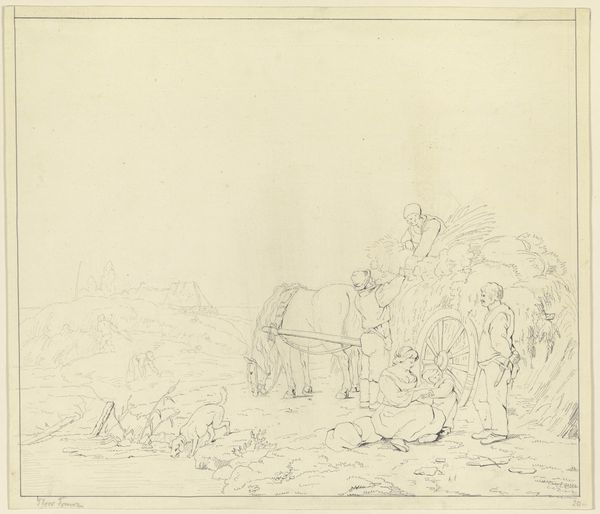
Dimensions: height 233 mm, width 398 mm, height 364 mm, width 446 mm
Copyright: Rijks Museum: Open Domain
Curator: This is "Strandtafereel met dieren," a beach scene by jonkheer Victor Eugène Louis de Stuers, created sometime between 1853 and 1916, rendered in ink on paper. Editor: Well, first glance, it's whimsical. Dreamlike even. The sketch style combined with the gathering of people and animals… it feels like a fleeting memory, doesn't it? Curator: Absolutely. As an ink drawing, we can consider it as a possible precursor to lithography which at the time was an emergent popular media with ever increasing demands on paper production. Look at the linear quality, the way the ink defines the figures; it’s fascinating to think about the economics that informed its creation. Editor: And the imagery! What is with the seal and octopus flanking the oval? Seals often represent adaptability, navigating both land and water, while the octopus… its intelligence, mystery. They frame this leisurely scene with a sense of hidden depths, perhaps suggesting what remains unseen in polite society. Curator: A polite society reliant on emerging chemical industries. Let's also consider the labour: paper and ink production processes required extensive mining for raw materials such as minerals and coal which has well documented societal impact. The creation of such imagery wasn't possible without these elements and these processes and this work serves as documentation of society and those methods converging in leisure. Editor: So you see that also represented within this scene? These fashionable figures are enjoying the fruits of… questionable labor? I like the unsettling tension. The leisure scene, the strange sea creatures...all point to the complicated underbelly of progress. Even the line work – tentative in some places, bolder in others – feels like a negotiation with meaning. What is fact and what is perceived truth here? Curator: Perhaps we could further suggest the drawing here reflects the romantic notions surrounding early capitalism; as society began using up previously unfathomable amounts of limited materials and resources such images offered both aspiration and solace? A beach as both leisure and industrial complex? Editor: I think that works. A reflection, both literal and metaphorical. This beach scene, then, isn't just a snapshot of a moment but a window into a culture grappling with the implications of its choices. Curator: Yes, and thinking of that in respect to those new material conditions opens an even richer narrative. Editor: Exactly. It offers some unsettling food for thought as we enjoy this small work and also question what is in front of us, historically, ethically, symbolically…
Comments
No comments
Be the first to comment and join the conversation on the ultimate creative platform.


